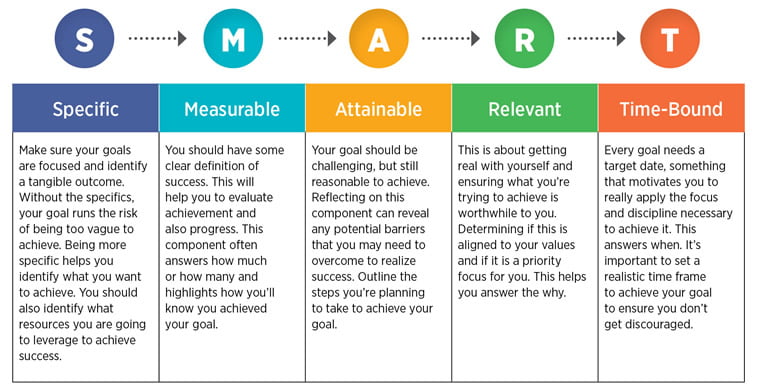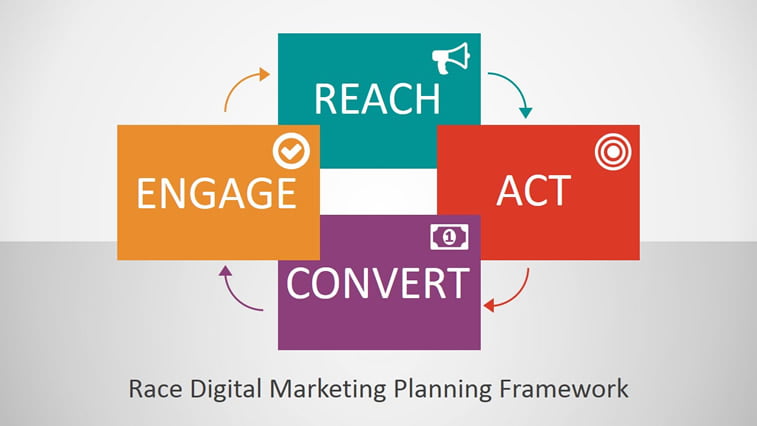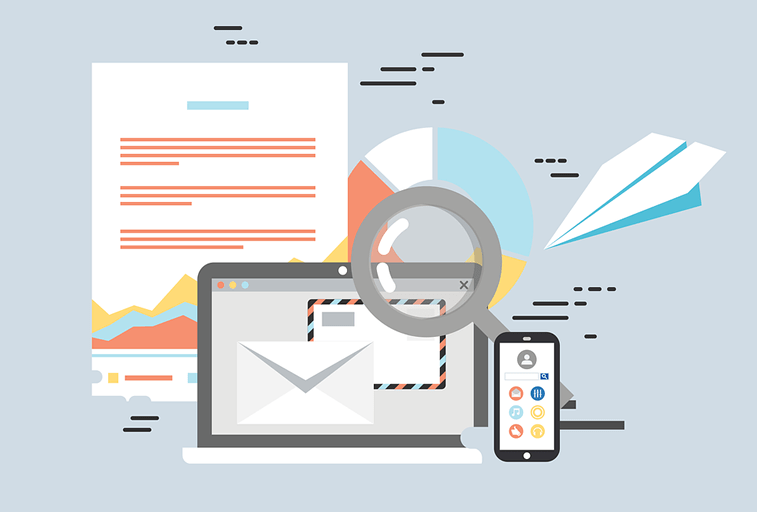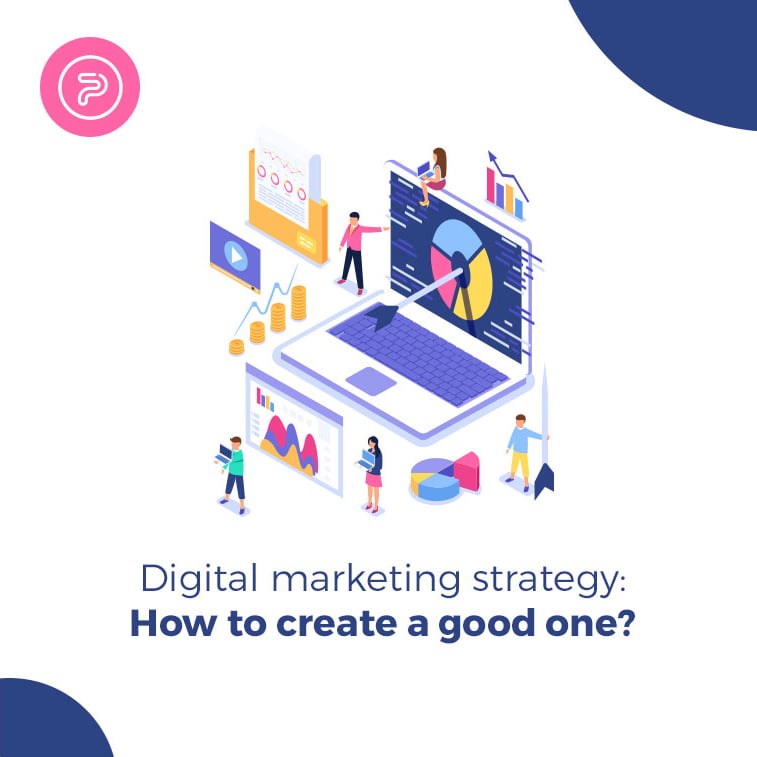Are you a business owner or a digital marketer with a dilemma: to invest in pay-per-click search engine campaigns or to go for social media advertising? To advertise on Facebook or not? To create a long-term blogging plan or to go for ad hoc video production?
Digital marketing channels have taken over the throne, so nowadays everyone is talking about email marketing, social media ads, Google Ads, SEO techniques, content marketing, and all other types of digital business promotion.
But, where to start? Should you go with the flow or would it be better to think it through and create a meaningful digital marketing strategy? Well, a strategy is always a better idea.
Having long-term goals, specific plans, and content calendars aligned with your business goals is going to make it easier for you to stand out among your competitors.
No matter if you are a small business owner, solo-marketer, or you work for a large corporate team, digital marketing tactics will help your company to:
- Get found online
- Promote your products and services
- Raise brand awareness
- Attract more potential customers
- Grow your conversion rates
- Make people trust your brand
Creating and executing a strategy might feel a bit intimidating, but when you make a solid ground, clearly define your goals, and take it one step at the time, you could conquer this digital marketing sphere with ease.
6 Steps for an Efficient Digital Marketing Strategy
1. Define your goals
This is the first and most important step. You need to articulate your goals and define the exact aim of your marketing activities before you start.
This goes in two ways:
- Defining specific goals for every marketing campaign
- Aligning your marketing goals with your business goals
Both of these issues can include short-term and long-term goals.
Short-term marketing goals might include, for example, promotion of new products/services in your offer, enlarging the number of time-sensitive discount coupons used, or selling more tickets during the early-bird period.
On the other hand, long-term marketing goals might include growing your mailing list from 1,000 to 100,000 people, for instance, or raising the conversion rates through PPC advertising, gaining more social media followers, positioning your CEO as an industry taught leader, or optimizing your website to rank higher in search results.
While setting up all those marketing goals, make sure to follow your business values, style guide, voice and tone, and align them all with short-term and long-term business growth projections.
- What is your company mission?
- Where do you see your company in 5, 10, 20 years?
- Do you prefer growing your business slowly, or you aim for a rapid scaling?
- Is your content branded, does it consistently speak the core values to your audience?
Answering these questions might be truly helpful.
Setting SMART goals can also be very useful in this phase of strategy making. SMART stands for making your goals Specific, Measurable, Attainable, Relevant, and Time-bound.

2. Know your audience
Okay, we have mentioned the audience in the previous section. It is the second most important piece of the puzzle.
Who is your audience? Do you have it envisioned? Does it include fashionable teenagers? Female entrepreneurs? Men with a beard? Local restaurant owners? Corporate C-level executives?
To define your target audience, you cannot simply say “I want to sell my products to everyone“. You need to be more specific. Narrow it down. Get into details.
For this purpose, you need to walk in your customers’ shoes for a while, to get to know their needs, thoughts, feelings, desires, urges, pain points… In other words, you need to roll up your sleeves and get some research done.
The best way to define the audience includes the creation of buyer personas and customer journey maps, researching people’s online behavior, outlining customers’ search intent, taking surveys, and other methods that might provide you with the insight into your audience demographics, behaviors, interests, and problems that you could solve with your products or services.
Once you know all of this, you can perform the audience targeting for your digital ads and social media promotions more accurately, with an extensive reach, and a superior impact.
3. Find your channels
Now, here follows the question – where to advertise?
Which digital channels should you choose for your online business promotion? Should you go only with Facebook ads or to include LinkedIn, Instagram, and YouTube marketing solutions as well? Is omnichannel marketing really your thing?
Is it better to set up an SEO strategy and gain higher positions in SERPs over the next year or two, or to go for a Google Ads campaign for every relevant keyword and quickly (but not as firmly) outperform your competitors?
For that matter, do you know where do your competitors advertise? Can you see through their digital marketing strategy? Which channels do they prefer? Is there a sweet spot for you to position your brand and stand out? Could you outsmart the competition and create a campaign that will launch your business into the skies?
Answers to all of these questions will depend on a single thing – where is your audience?
If your potential clients are mostly on LinkedIn, then learn the ins and outs of LinkedIn Marketing Solutions, read their free e-books on advertising throughout this network, and create a strategy accordingly.
On the other hand, if you own an e-shop and you want to expand your client base and grow your online sales, then consider having a Google Ads campaign or any other form of a targeted PPC campaign.
If you have been running a blog for freelancers for years, and you’ve just launched a fresh new online course jam-packed with useful content, you might want to use your mailing list to perform a targeted campaign and spread the word out with a few simple clicks.
So, the main advice is this: choose your marketing channels wisely. Those should be the ones with the highest probability of bringing you the biggest return on investment (ROI). It’s as simple as that.
An interesting example might be the digital strategy from Mastercard. The company wanted to position its brand through people’s travel-based stories and adventures. To grow the number of cardholders, they created their own travel blog named Priceless Cities. As a result, the company has aligned its brand not only with the things that people buy with their credit cards, but with the places they visit and memories they create.
You can use the popular RACE framework to help you integrate various marketing channels into the impactful strategy.
RACE stands for:
- Reach – use different online techniques to drive more traffic to your website
- Act – carefully use CTA buttons to generate more qualified leads
- Convert – use retargeting and optimize your ads to gain more conversions
- Engage – increase sales by nurturing long-lasting relationships with your existing customers

4. Create a content plan
If you run a corporate blog, it is always a good idea to keep a consistent editorial calendar. You can use Google Sheets for this purpose and simply outline weekly, monthly, quarterly plan for the future blog posts.
If you struggle finding inspiration for topics, we recommend you carefully research the keywords you want to rank higher for, and then outline the SEO-friendly articles.
We also advise you to stay in the loop of all the happenings, news, events, and trends within your industry and your specific niche. That way, you will easily get the bigger picture of what should you cover in your topics, from which angels, and in what context.
A social media marketing calendar is the next big thing for you to master. It is going to be a tremendously useful tool that will help you plan and schedule all your social media content in advance. It will save you loads of time, and make your social posts well-organized, consistent, and more creative.
Email newsletters and promotional email marketing campaigns are also an important part of your content marketing strategy.
What is the difference between these two?
Well, an email newsletter is what you send out to your mailing list on a regular basis. It may be every day, once a week, twice a month, or every now and then – whichever suits your business needs best. You can send over corporate announcements, new blog posts, links to articles from respected sources in your industry, and other relevant content for your subscribers. It can also include a dedicated space for banner ads or any kind of affiliate marketing. It is also a good way to award your subscribers with specific coupons and free goodies.
Your email marketing campaigns, on the other hand, are what you send with a specific goal. It can be a promotion of an upcoming webinar, your new book, the start of the enrollment period for your online course, a deadline for your NGO’s open call or a crowd-funding campaign.
Usually, promotional emails are set up in sequels. You can send them weekly at first, and then, as the deadline is approaching, you can opt for several emails per day. Just make sure to stay relevant for your readers, and try not to become too spammy.

5. Execute your plan
Once you have all the plans, sheets, and calendars prepared, don’t stop there. Your mission is not over yet. Execution of the marketing strategy is starting out, and it is an invaluable step in the process.
Should you manage everything by yourself personally or with the help of your team? It is up to you to decide, and it depends on your brand scale. If you are about to promote your own graphic design services as a freelancer, you can start doing it right away, all by yourself.
But, if you want to execute a corporate digital strategy for a multinational company that is rapidly growing, you might want to consider hiring a team of content specialists, copywriters, bloggers, social media gurus, email ninjas, design unicorns, and – well – all other professionals that you need.
So, for the large-scale strategies you have two options:
- Hire/outsource a team of experts from a digital marketing agency
- Use automation tools to put your plans in motion and get the wheels turning
For the former, try to find a creative team that is aligned with your brand’s vision, people who share the same values as you, and are strongly devoted to surpassing your expectations on digital advertising and content strategizing.
For the latter, try using specifically designed tools, software, and applications for different goals.
For social media strategy outlines, plans, calendars, and automation, you can go with Hootsuite, HubSpot, Buffer, and similar all-in-one platforms. Or, you could choose, for instance, Later for Instagram post creation and automation, TubeAssistPro for YouTube marketing, AdEspresso for Facebook ads.
You can also create a promotional social video out of your blog posts by using Recast. You can use it to convert your text into video, or to create memes, stories, and video ads from scratch. Another useful tool might be the free version of the AI-based video creating platform Lumen5.
The same goes for Canva or Crello, if you need well-designed visuals for your media social media posts, infographics, banners, posters, brochures, greeting cards, newsletter templates, customizable website patterns, and everything in between.
6. Monitor, evaluate, and measure
You can use different tools to get insight into the overview of your audience interaction with your digital ads, website, app, or social media profiles.
For this purpose, you can go with Google Analytics, Facebook Pixel, Instagram Insights, or any other analytics tool to catch the real-time engagements, likes, and shares, and to determine audience demographics, habits, behaviors, locations, devices, referring links, and much more.
By monitoring your marketing channels, you will gain enough information about the performance of each and every one of them. Use the insights to track your advertisements, evaluate your campaigns, and measure the results.
That way, you will learn which channels are bringing you the best ROI, and you will know how to tweak your marketing strategy for future endeavors and gain even more traction with your digital campaigns.
In this phase, Google’s HEART metrics could be a very helpful tool. The HEART framework includes the measurement of Happiness, Engagement, Adoption, Retention, and Task Success. Although Google has developed the HEART system to measure user experience, it is easily adjustable to measuring campaign outcomes, progress towards goals, and overall customer satisfaction. It is a great way to describe the subjective experience and visual appeal, predict the level of engagement, address the key problems, and estimate campaign effectiveness.
Conclusion
To wrap it all up, we can summarize several well-known principles about the digital marketing strategy:
- Set SMART goals – make them Specific, Measurable, Attainable, Relevant, and Timely
- Use RACE framework – use your content to Reach, Act, Convert, and Engage
- Measure with HEART – Google’s metrics can help you evaluate Happiness, Engagement, Adoption, Retention, and Task Success
In other words, set the short-term and long-term marketing goals, align them with the business goals, define your audience, create buyer personas, learn your customer journeys, follow your audience and find the online channels that perfectly fit your goals. Then, manage content creations, make editorial plans and social media calendars, use different tools to keep it all running smoothly, and, finally, evaluate and measure your success.
If you are an entrepreneur, startup founder, or a small business owner, we encourage you to try creating a marketing strategy on your own. However, if you need to handle a strategy on a much larger scale, or you believe that you are not such a marketing guru yourself, consider hiring a team of digital marketing experts. May we just add that you might have stumbled upon your future marketing partners over here, as we are proud to say that PopArt Studio has recently been recognized as one of the Top Digital Agencies in the world. And we are eager to hear all about your projects, so feel free to get in touch with us.





